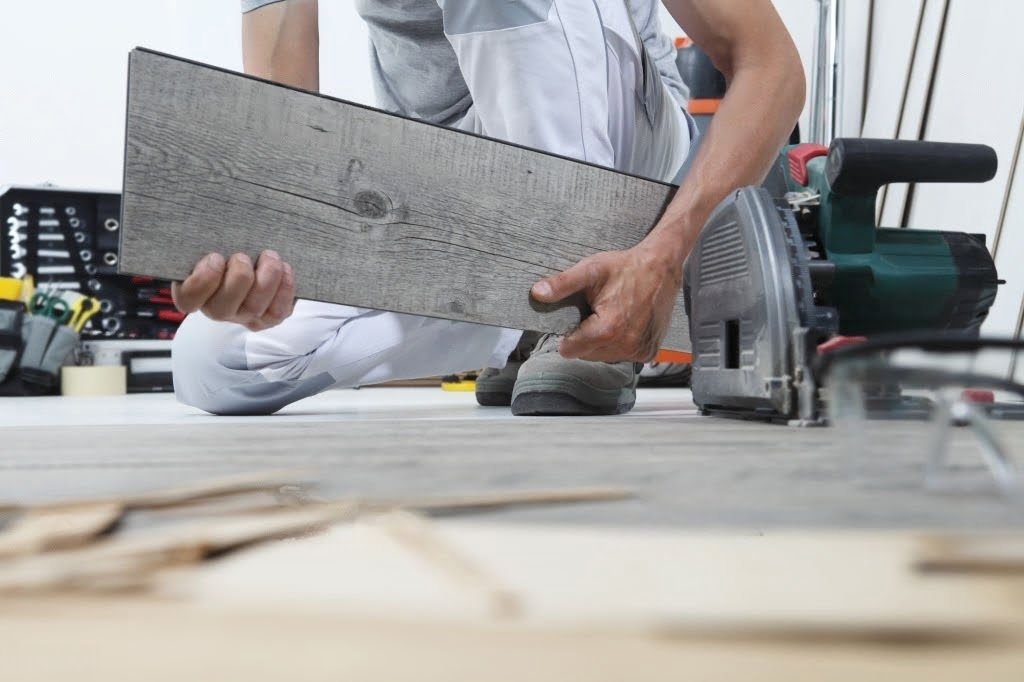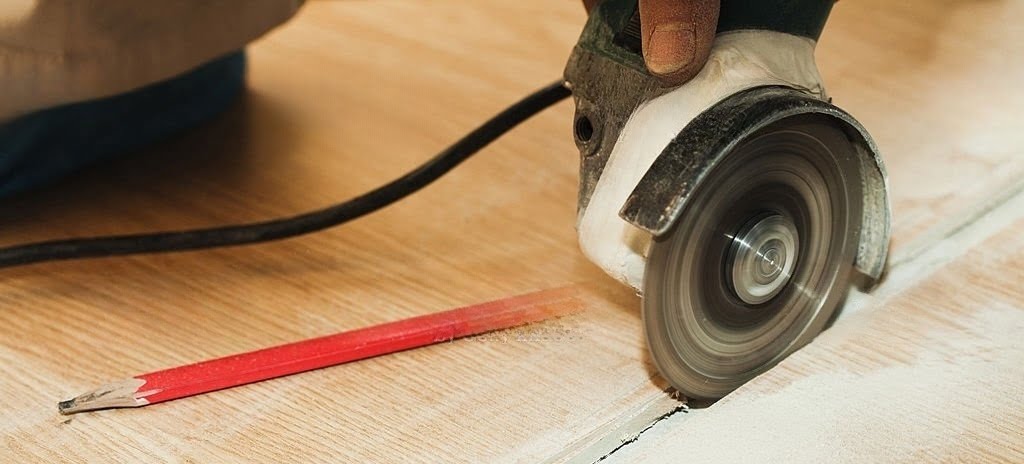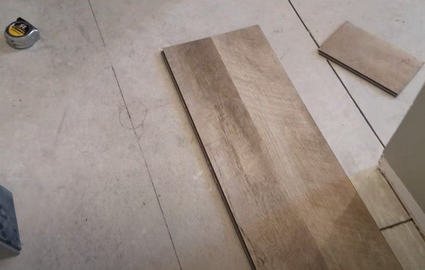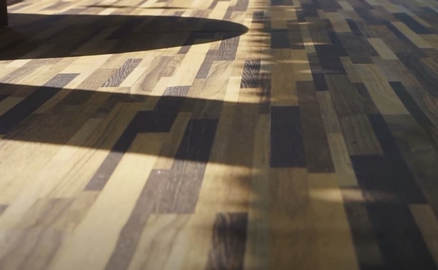What type of blade to cut laminate flooring
Explore our in-depth guide on cutting laminate flooring, covering various types of blades, essential tools, and cutting techniques. Learn how to achieve perfect cuts for a seamless and professional laminate flooring installation, whether you’re a homeowner or a pro.

Laminate flooring is a popular choice for homeowners due to its durability, affordability, and ease of installation. It’s composed of multiple layers that are fused together, creating a strong and resilient surface that mimics the appearance of hardwood, stone, or tile.
Importance of choosing the right blade for cutting
Selecting the appropriate blade for cutting laminate flooring is crucial in ensuring a clean and precise cut. Using the wrong blade can result in chipping or damage to the laminate’s surface, which can negatively impact the final installation. In this article, we’ll explore the various types of blades and tools used for cutting laminate flooring, as well as provide tips for achieving the perfect cut.
Types of blades for cutting laminate flooring
In this section, we will discuss the various types of blades specifically designed for cutting laminate flooring. We will explore the unique features of carbon blades, bi-metal blades, and carbide tooth blades, as well as their respective advantages when it comes to cutting laminate materials. Additionally, we will provide examples of well-known brands for each type of blade, ensuring you have the necessary information to select the most suitable blade for your laminate flooring project.
Carbon blades
These blades are known for their flexibility and durability, making them a popular choice for cutting laminate flooring. The high carbon content in these blades ensures that they maintain their sharpness longer, providing clean and precise cuts. A well-known brand for carbon blades is LENOX.
Bi-metal blades
These blades combine the flexibility of carbon steel with the durability and cutting edge retention of high-speed steel. This unique combination provides an excellent balance between blade life and cutting performance, making bi-metal blades a solid choice for cutting laminate flooring. Milwaukee is a reputable brand that offers high-quality bi-metal blades.
Carbide tooth blade
These blades are characterized by their exceptionally sharp and long-lasting cutting edges. The carbide tips on these blades make them an ideal choice for cutting dense laminate materials, ensuring smooth and accurate cuts with minimal chipping. Diablo is a renowned brand that produces top-quality carbide tooth blades.
Tools for cutting laminate flooring

Home improvement enthusiasts often choose to install laminate flooring on their own. It can be a fun and rewarding project, especially when you have the right tools for the job. While laminate flooring is a durable and cost-effective option, it can be challenging to cut without the right tools. To cut laminate flooring correctly, a range of tools are available including cutting boards, circular saws, jigsaws, miter saws, table saws and rotary tools. Here we will look at each in greater detail to help you decide which one will work best for your project.
A. Cutting board
A cutting board is a stable, flat surface designed to support laminate flooring during the cutting process. This essential accessory ensures accurate cuts while minimizing the risk of damage to the material.
B. Utility knife
A utility knife is a versatile tool used for making straight and curved cuts in laminate flooring. Its sharp blade allows for precise cuts, especially when trimming the edges of laminate planks.
C. Circular saw
Circular saws are powerful tools equipped with a circular blade, ideal for making straight cuts in laminate flooring. With the appropriate blade, a circular saw can make quick and clean cuts, significantly reducing installation time.
D. Jigsaws
Jigsaws are versatile tools equipped with a reciprocating blade, allowing for curved and intricate cuts in laminate flooring. When fitted with the right blade, jigsaws can provide clean and precise cuts, especially in areas with complex shapes or tight corners.
E. Miter saw
Miter saws are specialized tools designed for making precise angled cuts in laminate flooring. With a high-quality blade, miter saws can deliver clean and accurate cuts, ensuring seamless joints between laminate planks.
F. Table saw
Table saws are stationary tools with a circular blade mounted beneath a flat table surface. These saws are ideal for making precise, straight cuts in laminate flooring, particularly when working with larger quantities of material.
G. Rotary tool
Rotary tools are handheld devices equipped with various attachments, including cutting discs. These versatile tools can be used for cutting laminate flooring, particularly for trimming edges or making small, detailed cuts.
Tips for cutting denser laminates
Cutting denser laminates can be a challenging task, as they are made with more compact materials that require specialized tools and techniques to achieve clean and precise cuts. We will provide tips on how to effectively cut denser laminates, including selecting the appropriate blade, ensuring smooth cuts, and adjusting the cutting speed.
A. Selecting the appropriate blade
Denser laminate materials require a blade with a higher tooth count and a carbide tip to ensure clean, smooth cuts. The carbide tip provides superior cutting performance and longevity when working with dense laminates, minimizing the risk of chipping or damage.
B. Ensuring smooth cuts
To achieve smooth cuts on denser laminates, maintain a steady feed rate and avoid forcing the material through the blade. This will help to reduce the risk of chipping and ensure a clean, precise cut. Additionally, using a zero-clearance insert on table saws and miter saws can help to support the laminate and minimize chipping.
C. Adjusting cutting speed
When cutting denser laminates, it may be necessary to adjust the cutting speed to achieve optimal results. Slower cutting speeds can help to minimize chipping and maintain a smooth, clean cut. Be sure to follow the manufacturer’s recommendations for cutting speeds when working with dense laminate materials.
Replacement blades
As a DIY enthusiast or professional tradesperson, you understand the importance of using the right tools for the job. When it comes to power tools, replacement blades are an essential component that should not be overlooked. In this article, we will discuss when to replace blades and how to choose the right replacement blade for your tool.
A. When to Replace
Blades Knowing when to replace a blade is crucial for maintaining a safe and efficient work environment. Blades can become dull over time, causing them to work less effectively and potentially resulting in accidents. Some signs that a blade needs to be replaced include:
- Dullness: A dull blade will not cut through materials as effectively as a sharp blade, which can lead to frustration and wasted time.
- Damage: A blade that is chipped or bent can cause the tool to vibrate or wobble, which can be dangerous.
- Wear and Tear: Regular use of a blade can cause it to wear down over time, reducing its cutting ability and causing it to wear out more quickly.
- Corrosion: If a blade is left exposed to moisture, it can become rusted, which can affect its performance and cause it to deteriorate more quickly.
B. Choosing the Right Replacement Blade
Choosing the right replacement blade for your tool can be overwhelming, but it is essential for achieving the best results. The following are some factors to consider when choosing a replacement blade:
- Material: Different materials require different blades. For example, a blade that is designed for cutting through metal will not work as effectively for cutting through wood.
- Teeth Count: The number of teeth on a blade will affect the speed and quality of the cut. Blades with more teeth will create smoother cuts, while blades with fewer teeth will cut through materials more quickly.
- Blade Size: The size of the blade should match the size of the tool it is intended for. Using a blade that is too large or too small can cause the tool to malfunction or become damaged.
- Brand Compatibility: It is important to choose a replacement blade that is compatible with your tool’s brand and model. Not all blades are interchangeable, and using the wrong blade can damage the tool or cause it to malfunction.
- Blade Quality: Choosing a high-quality replacement blade can increase its lifespan and provide better cutting performance, which can ultimately save you time and money in the long run.
Frequently Asked Questions
Can you cut laminate flooring with a regular saw blade?
While it is possible to cut laminate flooring with a regular saw blade, it may result in chipping, rough edges, or damage to the laminate surface. It is recommended to use a blade specifically designed for cutting laminate flooring to achieve the best results.
What is the best tool to cut laminate flooring?
The best tool for cutting laminate flooring depends on the specific cutting needs of the project. For straight cuts, a circular saw or table saw is ideal. For curved or intricate cuts, a jigsaw is the preferred choice. Miter saws are best suited for making precise angled cuts.
Does laminate flooring blunt saw blades?
Laminate flooring can cause saw blades to become dull over time, particularly if the blade is not specifically designed for cutting laminate materials. Using a blade with carbide tips or designed for cutting laminate flooring can help to prolong the blade’s lifespan.
Can you cut laminate without a saw?
Yes, laminate flooring can be cut without a saw using tools such as a utility knife or a rotary tool. However, these methods may require more time and effort compared to using a saw.
Can a rotary tool cut laminate flooring?
A rotary tool can be used to cut laminate flooring, especially for trimming edges or making small, detailed cuts. Ensure that the rotary tool is equipped with the appropriate cutting attachment and follow the manufacturer’s instructions for optimal results.
In Summary,
Using the correct cutting tools and techniques is essential for ensuring a successful laminate flooring installation. The right blade and tool combination will result in clean, precise cuts that contribute to a seamless and professional finish.
By carefully selecting the appropriate blades and tools, as well as following best practices for cutting laminate flooring, homeowners and professionals alike can achieve a high-quality installation that stands the test of time. Remember to prioritize safety when working with cutting tools and always follow the manufacturer’s guidelines for optimal results.


